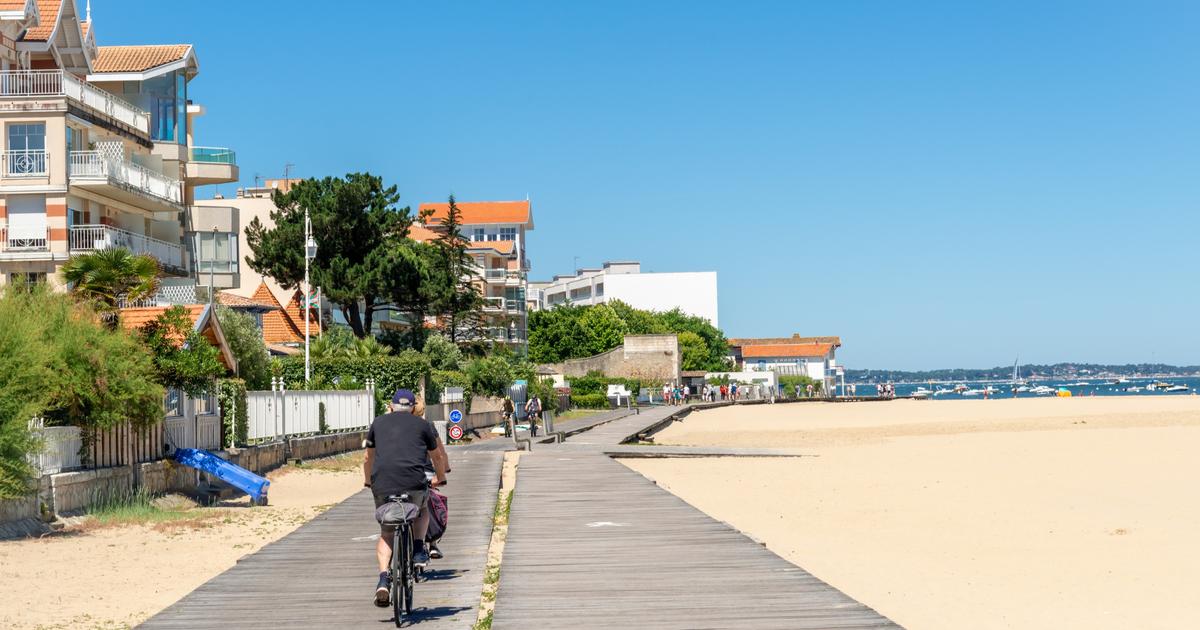Le Figaro Bordeaux
Everyone in the saddle!
Already on the podium of the best French departments in terms of cycle routes, with 736 kilometers on the clock (excluding mainland France), Gironde wishes to remain in the leading pack by creating 1000 kilometers of additional facilities by 2030,
“in order to continue the creation of a coherent and continuous cycle network, in the countryside in particular but also in peri-urban areas which are often less well-equipped
.
An ambitious project to encourage
“a change of culture”
for getting around.
This new Gironde by bike plan, unveiled on March 7 after meetings in each territory, provides for the creation of
“departmental cycle routes”
and
“new or extended local cycle networks”
, through which the department wishes
to “enliven local life”
, with
“particular attention paid to the development of cycle routes serving colleges and intermodality places”
, and balancing territorial planning
“with secure parking, the development of infrastructure and intermodality places, the education in practice and repair services
.
“An ordinary and popular ecology”
Cycling has experienced phenomenal growth in France for years.
The Bordeaux metropolis is no exception, with -20% car travel between 2009 and 2021 and a boom in cycling over the same period (+124%), according to a study by the Bordeaux Aquitaine urban planning agency (A' urban).
While now less than half of trips in the metropolitan area are made by car, it still represents 71% of trips outside the mainland.
8% of trips by metropolitan residents are made by bicycle, but this figure drops to 2% for those who do not live in the urban area.
Gironde wishes to reduce this gap by developing dedicated infrastructure.
“It is neither more nor less an ordinary and popular ecology, an everyday ecology
,” believes Jean-Luc Gleyze, the president of the department.
“Together, we are determined to carry out cycling projects linked to accessibility to our colleges, the development of the Gironde RER or the presence of express coach lines, to improve local life rather than high-speed lines!”
The implementation of this ambitious plan will require 100 million euros, a quarter of which will be covered by the department.
The State, the region and the municipalities should provide the rest of the financing.
Also read: How fast do cyclists ride?
The Bordeaux metropolis launches an investigation
“The important thing is to work together”
“64% of journeys of two to five kilometers are still made by car today. An irrational observation when the figures announce that mobility represents 30% of CO2 emissions, more than three quarters of which come from cars
,” underlines the department.
Jean Galand, vice-president of Gironde in charge of mobility and infrastructure, notes that
“from the moment we were able to set up continuous routes with a quality network and secure parking, we noticed that the practice cycling was developing
.
The elected official takes the Saint-Jean-d'Illac college as an example:
“While the average is 3% in very rural areas, nearly 80% of children use bicycles to go to school.”
A success which, according to him, can be explained by the presence of secure cycle paths around the establishment and by dedicated parking spaces allowing 500 bicycles to be parked, the equivalent of the number of students.
Of the 1,500 kilometers identified by department stakeholders as being able to be transformed into cycle paths, 400 also concern college services.
However, creating new tracks is not an end in itself.
“We need to have a global vision of the project, with multimodality,”
explains Jean Galand, making it easy to move from cycling to the metropolitan RER or to a carpooling area.
“The important thing is to work together, with the region, the State, the communities of municipalities and the municipalities”
, in order to ensure consistency in the development of cycling infrastructure.
“Alone, we go fast but we don’t go far
,” recalls the elected official.
According to him,
“the department positions itself as a real locomotive in terms of bicycle travel”
, but cannot do everything alone.
For the success of these secure developments, all communities will have to step up their efforts.
Download the document

